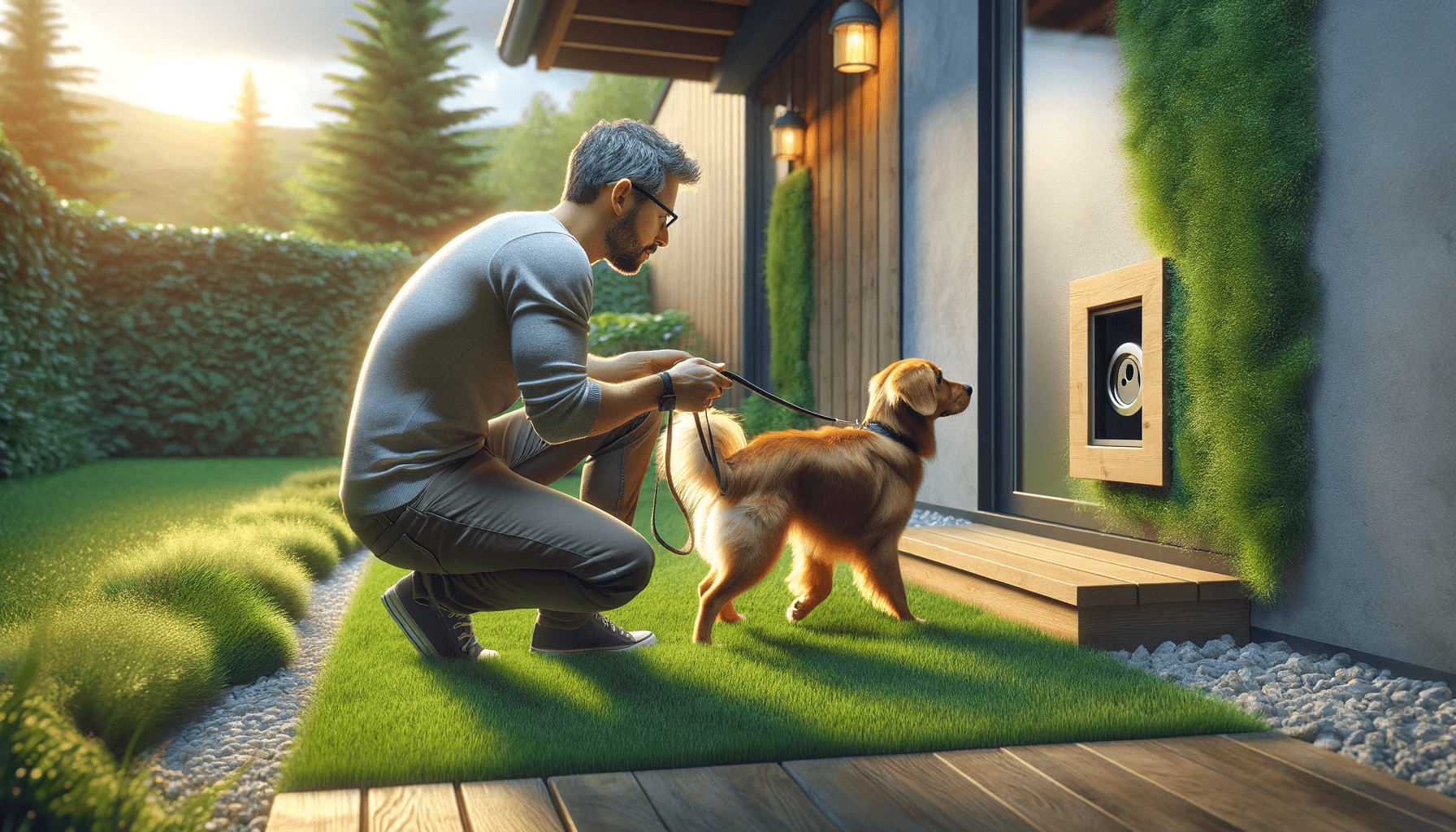Are you tired of struggling with unreliable dog training methods? Look no further – the 2023 trend in dog training is here to bring you trustworthy and assured results.
Discover the power of positive reinforcement and how it builds a strong bond between you and your furry friend.
Learn effective techniques for teaching commands and solving behavior problems. With consistency, you can achieve reliable results in no time.
Get ready for a transformational training experience like no other.
Key Takeaways
- Positive reinforcement is an effective and consistent way to achieve results in dog training.
- Building a strong bond with your dog through trust and positive interactions is crucial.
- Effective techniques such as clicker training and consistent cues improve communication and command teaching.
- Problem-solving and behavior modification require professional guidance, patience, consistency, and positive reinforcement.
The Power of Positive Reinforcement
You can achieve consistent and effective results in dog training by utilizing the power of positive reinforcement. Positive reinforcement techniques are based on the principle of rewarding desirable behavior, which encourages dogs to repeat those behaviors in the future. This approach focuses on rewarding your dog's good behavior with treats, praise, or play, rather than punishing unwanted behavior.
One of the key benefits of reward-based training is that it builds a strong bond between you and your dog. By using positive reinforcement, you create a positive and enjoyable experience for your dog during training sessions. This helps to establish trust and mutual respect, making your dog more eager to learn and cooperate.
Another advantage of positive reinforcement techniques is that they're more humane and less stressful for your dog. Instead of using harsh methods or physical punishment, which can harm the dog both physically and emotionally, positive reinforcement focuses on rewarding desired behavior. This creates a positive and safe training environment, where your dog feels motivated and encouraged to learn.
In addition, positive reinforcement techniques are highly effective in shaping your dog's behavior. By consistently rewarding desired behaviors, you can teach your dog new commands, tricks, or good manners. This approach helps to reinforce positive behaviors and reduce unwanted ones, leading to a well-behaved and happy dog.
Building a Strong Bond Through Training
By incorporating positive reinforcement techniques, you can foster a deep connection with your canine companion through training. Building trust through positive reinforcement is essential in strengthening the human-dog bond. Dogs are social creatures that thrive on trust and positive interactions. When you use positive reinforcement, such as rewards, praise, and treats, your dog learns to associate good behavior with positive outcomes. This helps build trust between you and your dog.
Training techniques play a crucial role in strengthening the bond between you and your furry friend. Through training, you establish clear communication, set boundaries, and teach your dog important skills. This creates a sense of security and understanding, which contributes to a strong bond.
Consistency is key. When you consistently use positive reinforcement and clear training techniques, your dog becomes more confident and obedient. This, in turn, strengthens the bond between you.
Remember, training isn't just about teaching your dog commands; it's about building a relationship based on trust, respect, and understanding. When you invest time and effort into training your dog using positive reinforcement, you aren't only shaping their behavior but also creating a strong and lasting bond.
Effective Techniques for Teaching Commands
When using positive reinforcement techniques, it's important to employ effective techniques for teaching commands to your dog. One effective method is clicker training, which involves using a small device that makes a distinct clicking sound when pressed. By associating the click with a reward, such as a treat or praise, your dog learns to associate the click with positive reinforcement. This helps to create quick command response as your dog learns to anticipate the reward after hearing the click.
Another technique to enhance command teaching is incorporating hand signals. Dogs are highly visual creatures, and they can quickly learn to associate specific hand signals with commands. For example, you can use a closed fist for a 'sit' command, or an open palm facing upwards for a 'stay' command. By using consistent and clear hand signals along with verbal cues, you're providing better communication and reinforcing the desired behavior.
Problem Solving and Behavior Modification
To address any behavioral issues that may arise, it's important to implement effective problem-solving and behavior modification techniques for your dog. Addressing aggression issues is crucial for the safety and well-being of both your dog and those around them. Aggression can manifest in various forms, such as growling, biting, or lunging, and it's essential to seek professional guidance to address the underlying causes and develop a tailored plan to manage and modify your dog's aggressive behavior.
Another common behavioral issue that many dogs experience is separation anxiety. This can be distressing for both the dog and the owner, as it often leads to destructive behavior, excessive barking, or even self-harm. Overcoming separation anxiety requires a gradual desensitization process, where the dog is gradually exposed to being alone for short periods and rewarded for calm behavior. Additionally, providing mental and physical stimulation before leaving can help alleviate anxiety.
It is crucial to approach problem-solving and behavior modification with patience, consistency, and positive reinforcement. Seeking the assistance of a professional dog trainer or behaviorist can provide valuable insights and guidance in developing an effective plan to address these issues. Remember, every dog is unique, and with the right techniques and dedication, you can help your furry friend overcome any behavioral challenges they may face.
Achieving Reliable Results With Consistency
For reliable results, consistently reinforce your dog's training using positive reinforcement techniques. Achieving reliable results with consistency is crucial in dog training. Here are three key factors to consider:
- Importance of patience and persistence:
Training a dog requires time and effort. Patience is essential when dealing with setbacks or slow progress. Remember that dogs learn at their own pace. Stay persistent and continue reinforcing the desired behaviors. With time, your dog will understand what's expected of them.
- Establishing clear communication:
Effective training relies on clear communication between you and your dog. Use consistent cues and signals to convey your expectations. Make sure your dog understands what behavior is being rewarded and why. This clarity helps your dog make the connection between their actions and the consequences.
- Consistency is key:
Dogs thrive on routine and consistency. Establish a training schedule and stick to it. Use the same training methods and rewards consistently. This helps your dog understand what's expected of them and reinforces the desired behaviors.
Frequently Asked Questions
What Are the Potential Risks or Drawbacks of Using Positive Reinforcement in Dog Training?
Using positive reinforcement in dog training has potential risks and drawbacks. It's important to be aware that dogs may become reliant on treats and not respond without them. Consistency and balance are key.
How Can Dog Owners Ensure That Their Training Methods Are Building a Strong Bond With Their Furry Companions?
To build trust and strengthen the bond with your furry companion, focus on positive reinforcement techniques and consistent training. Use rewards, praise, and clear communication to ensure your training methods are effective and enjoyable for both you and your dog.
Are There Any Specific Techniques or Strategies That Can Be Used to Teach More Challenging Commands to Dogs?
To teach more challenging commands to your dog, there are specific techniques and strategies you can use. These methods ensure effective training and help your furry companion understand and respond to complex commands.
What Are Some Common Behavior Problems in Dogs, and How Can They Be Effectively Addressed Through Training?
Addressing behavior problems in dogs requires effective training techniques. By understanding the common issues such as aggression, separation anxiety, and excessive barking, you can use positive reinforcement, consistent routines, and professional guidance to effectively address these problems.
How Long Does It Typically Take to Achieve Reliable Results in Dog Training, and How Important Is Consistency in the Process?
To achieve reliable results in dog training, consistency is crucial. It typically takes time, but with consistent effort, you can see progress. Stick to a routine, reinforce positive behaviors, and be patient.
Conclusion
In conclusion, trustworthy dog training with assured results is becoming a prominent trend in 2023.
By utilizing positive reinforcement and effective techniques, owners can build a strong bond with their dogs while teaching them commands and modifying unwanted behaviors. Consistency is key in achieving reliable results.
With the right approach, dog training can be a rewarding experience that benefits both the owner and their furry companion.






